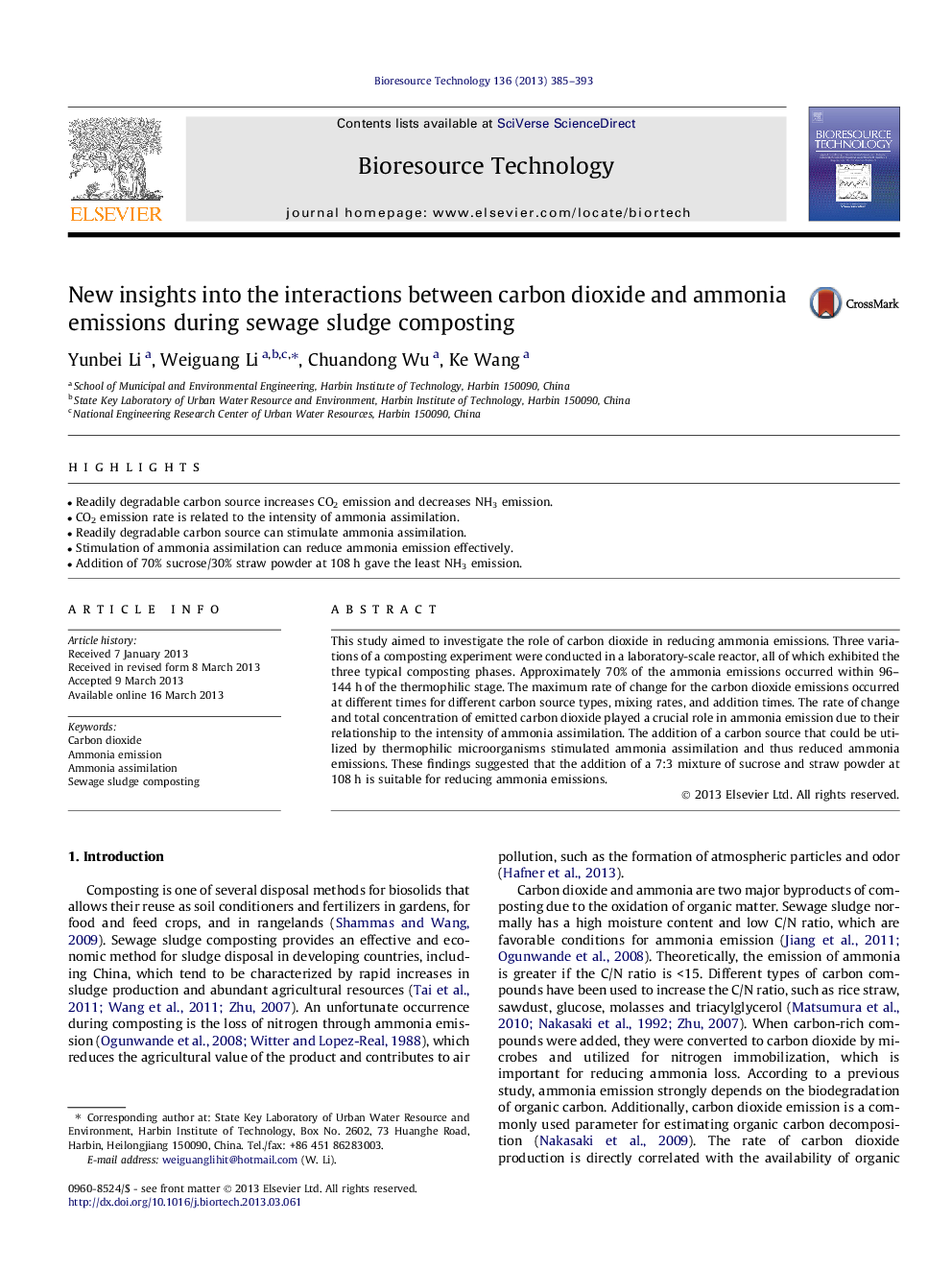| Article ID | Journal | Published Year | Pages | File Type |
|---|---|---|---|---|
| 7083395 | Bioresource Technology | 2013 | 9 Pages |
Abstract
This study aimed to investigate the role of carbon dioxide in reducing ammonia emissions. Three variations of a composting experiment were conducted in a laboratory-scale reactor, all of which exhibited the three typical composting phases. Approximately 70% of the ammonia emissions occurred within 96-144Â h of the thermophilic stage. The maximum rate of change for the carbon dioxide emissions occurred at different times for different carbon source types, mixing rates, and addition times. The rate of change and total concentration of emitted carbon dioxide played a crucial role in ammonia emission due to their relationship to the intensity of ammonia assimilation. The addition of a carbon source that could be utilized by thermophilic microorganisms stimulated ammonia assimilation and thus reduced ammonia emissions. These findings suggested that the addition of a 7:3 mixture of sucrose and straw powder at 108Â h is suitable for reducing ammonia emissions.
Related Topics
Physical Sciences and Engineering
Chemical Engineering
Process Chemistry and Technology
Authors
Yunbei Li, Weiguang Li, Chuandong Wu, Ke Wang,
